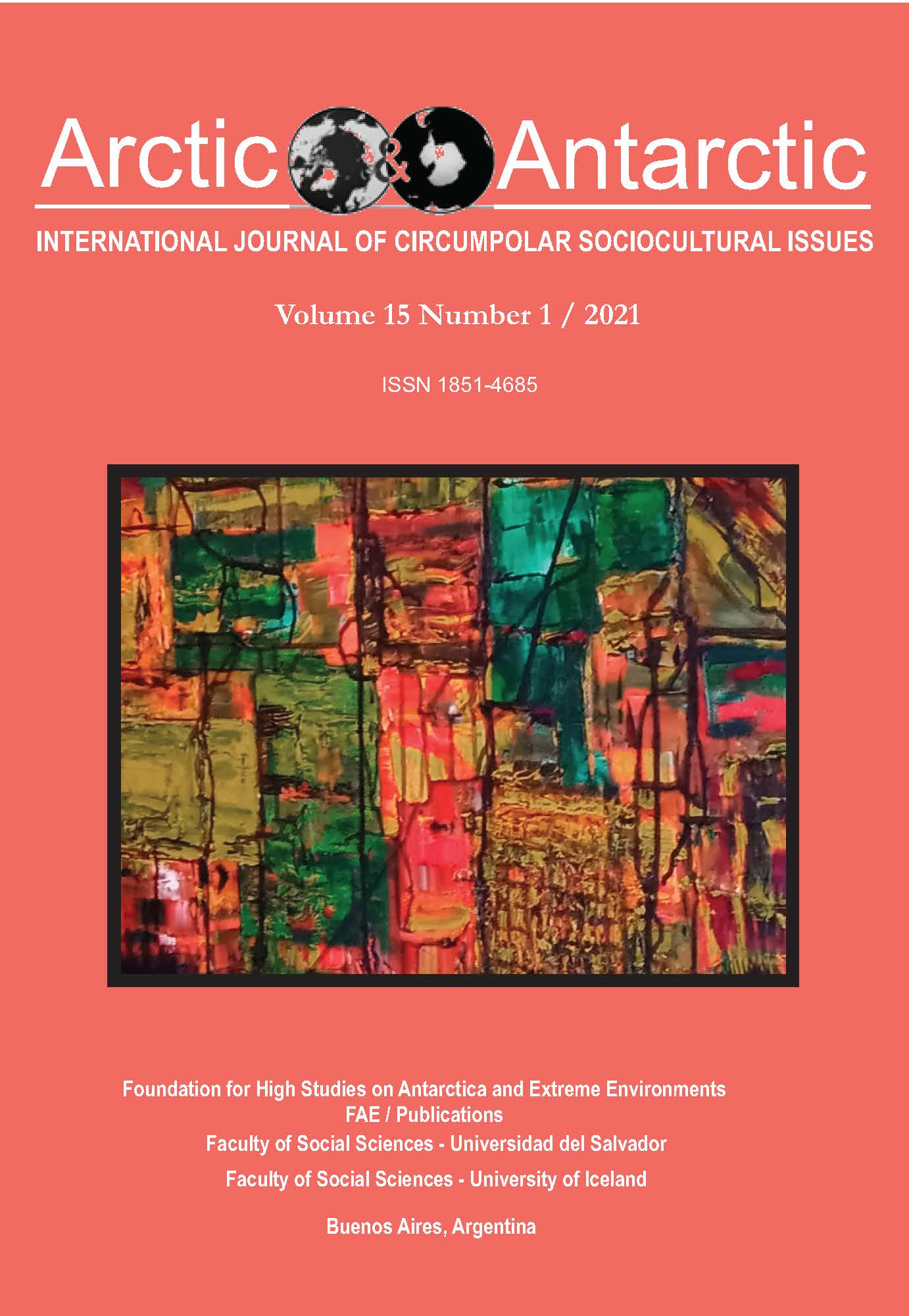Here is the whole issue of Arctic & Antarctic International Journal of Circumpolar Socio-Cultural Volume 15 – 2021
The Arctic & Antarctic International Journal of Circumpolar Socio-Cultural Issues
Patagonia, lights and shadows: Territorial perceptions of a circumpolar space.
Albina L. Lara Faculty of Economic Sciences, University of Buenos Aires (UBA), Technology Institute of Buenos Aires (ITBA), University of Salvador, (USAL) Argentina
This article presents some reflections for the understanding of the argentine Patagonian environment, as an integral and unique space. These reflections are based on the idea that a large part of the constructed images of Patagonia, in some way, prevent a genuine approach to this territory, due to the distortion and/or impoverishment in which they incur. Patagonia has been an imagined territory over which, many times, limiting and stereotyped characteristics have been imposed. Many of the perceptions of Patagonia have the stamp of otherness, which for some scholars was built mainly by “outsiders” and, at times, incorporated by nonoutsiders, in traits that have remained as part of Patagonian stereotypes. The article shows that this singular space confronts us with the urge of being able to perceive something different from what we are used to and, in such a way, approach this complex and elusive territory.
Boots in the snow: Vilhjalmur Stefansson and the expansive defense of Arctic America
Alexandre Delangle (Université Paris-Saclay, Institut de Recherches Arctiques Jean Malaurie)
This article is dedicated to the role played by Arctic explorer and writer Vilhjalmur Stefansson (1879-1962), before and during World War II in the United States. Hired as a military advisor when the U.S. Army senior officers expected a Japanese invasion of Alaska, he set the agenda of strategic planning in a geographic environment often discarded. Focusing on the author’s public writings in journals, magazines and books, as well as private correspondence with several actors of the national defense, this article also discusses the consequences of Stefansson’s portrayal of the Arctic. From his attempts to convince the American society it had the required skillset to settle the Arctic in the 1920s, the appointed advisor mobilized his technical polar knowledge to eventually pioneer American militarization of the Arctic.
Polar Bear Narratives from Gendered and Post-human Perspectives
Alice Bower & Kristinn Schram (University of Iceland)
This article discusses the corpus of polar bear narratives in Iceland, which are only to a limited extent based onhuman-bear interaction. It approaches polar bear narratives as a forum for the exploration of human-animal relations and the behavior expected by men and women in the communities that anticipate the bears’ arrivals. It takes into account sources ranging from medieval literature to published folk tales to recent field work, identifying continuity and change in bear narratives through time. It investigates aspirations ayedby real and imaginedpolar bears in both solidifying and subverting social norms and offering counter narratives to the modern grand narratives of the nature-culture binary. They offer a forum for exploration of spatial boundaries, human and non-human animal boundaries, and

